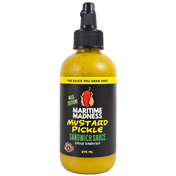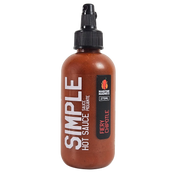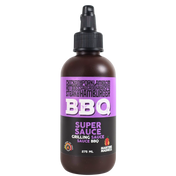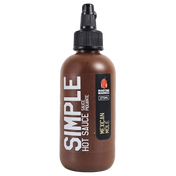Are you a hot sauce newbie? Overwhelmed by the variety of hot sauces available and not sure where to start? Fear not! In this beginner's guide to hot sauce, we'll cover everything you need to know to start your journey into the world of spicy goodness.
First, let's talk about heat levels. Hot sauces are typically rated on a Scoville scale, which measures the level of capsaicin, the compound responsible for the heat in peppers. Mild hot sauces, such as those made with jalapenos or serranos, typically have a rating of around 1,000-5,000 Scoville units. Medium-hot sauces, like those made with cayenne or Tabasco peppers, range from 5,000-50,000 Scoville units. And for those who like it really hot, there are super-hot sauces made with habaneros, ghost peppers, or Carolina Reapers, which can have ratings of up to 2 million Scoville units.
But these numbers are just to give you a rough idea of the heat you’re in for. The important thing to remember about the Scoville scale is that because every fresh pepper varies in heat, every batch of sauce is different in heat level - even if the recipe isn't changed! When it comes to our sauces here at Maritime Madness, we’ve created our own loose rating system called the Burn Rate. A Burn Rate of 4 is relatively close to a Frank's Red Hot for heat.
But heat level is just one aspect of hot sauce. The other important factor is flavour profile. Hot sauces can be made with a variety of peppers, each with its own unique flavour. For example, jalapeno-based hot sauces tend to be milder with a bright, fresh flavour, while habanero-based sauces have a fruity, citrusy, almost tropical flavour with a much hotter kick.
When choosing a hot sauce, it's important to consider both the heat level and the flavour profile. Do you want a mild sauce to add a little kick to your morning eggs (Bacon Blaze), or a super-hot sauce to impress your friends at a barbecue (Ultimate Giv’er)? Do you prefer a bright, fresh flavour (Tropical Habanero) or a more complex, smoky flavour (Newfoundland Screech)?
Once you've chosen your hot sauce, it's time to start experimenting! Hot sauce can be used in a variety of ways, from simply adding a few drops to your favourite dish to creating a marinade or dipping sauce. Here are a few tips for beginners:
- Start small: It's easy to overdo it with hot sauce, so start with just a few drops and work your way up to the desired level of heat.
- Pair wisely: Hot sauce can complement a wide range of foods, but it's important to consider the flavours of both the food and the sauce. For example, a smoky chipotle sauce (Fiery Chipotle) might pair well with grilled meats or vegetables, while a tangy vinegar-based sauce (Lime + Cilantro) might be better suited for seafood or salads.
- Be creative: Hot sauce is a versatile ingredient that can be used in a variety of ways. Try adding a few drops to your favourite soup or stew, mixing it into a salad dressing, or even using it to spice up a cocktail (our FireCandy Line is perfect for cocktails)!
So there you have it, a beginner's guide to hot sauce. Whether you're a seasoned chilehead, or just looking to add a little kick to your meals - we've got a hot sauce for everyone. So go forth, experiment, and find your perfect match!












